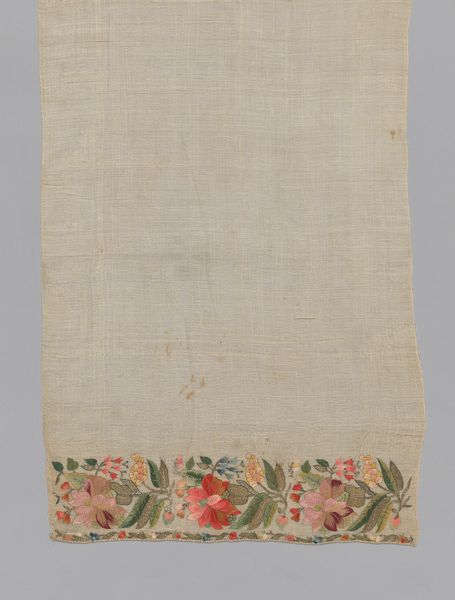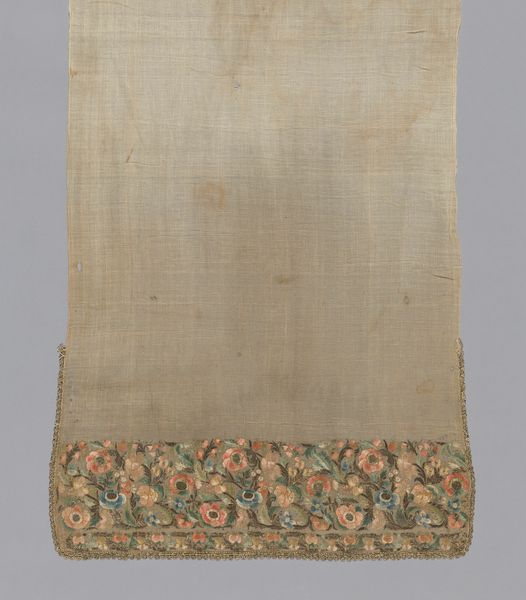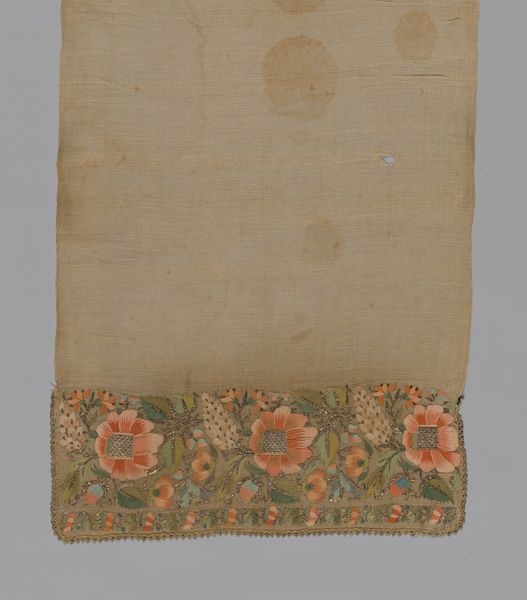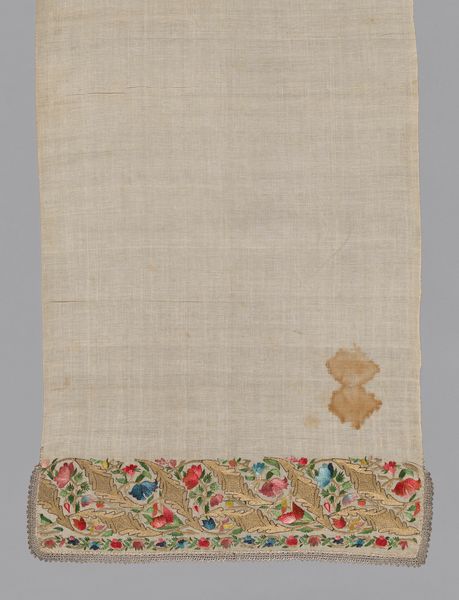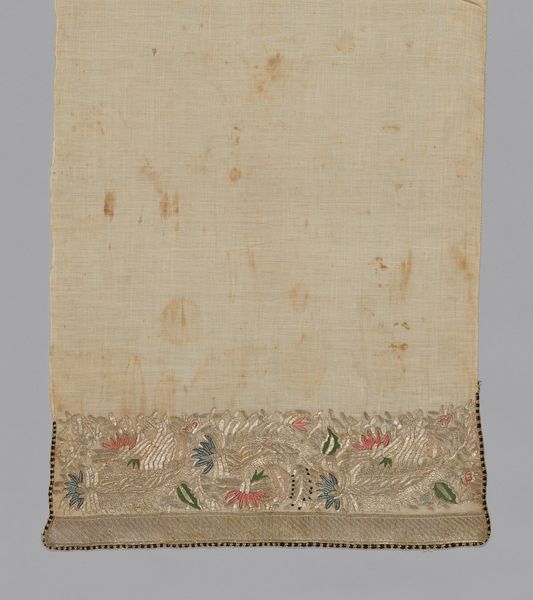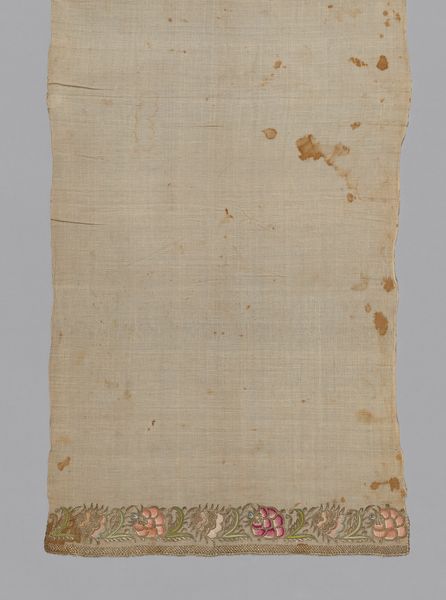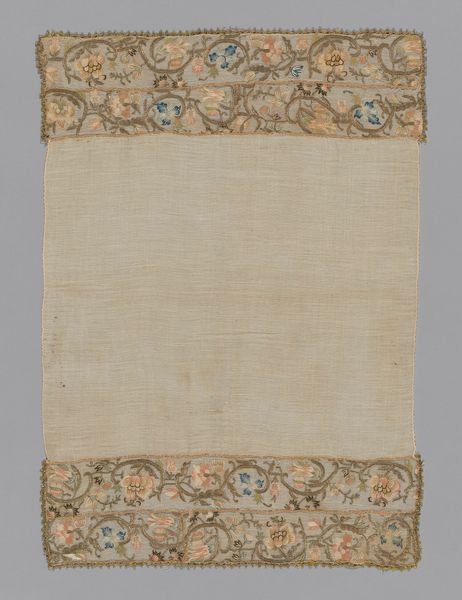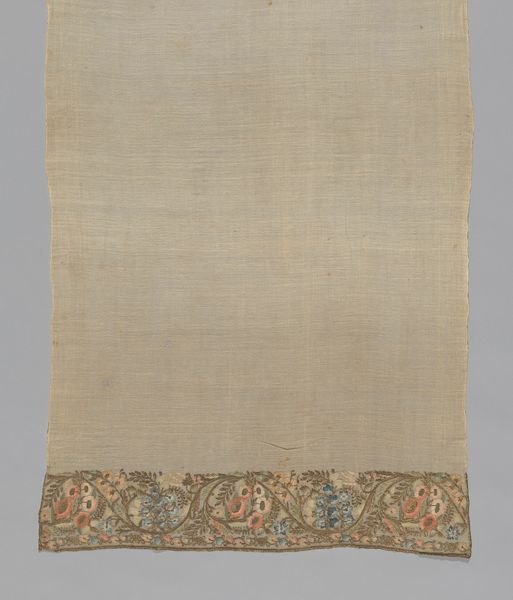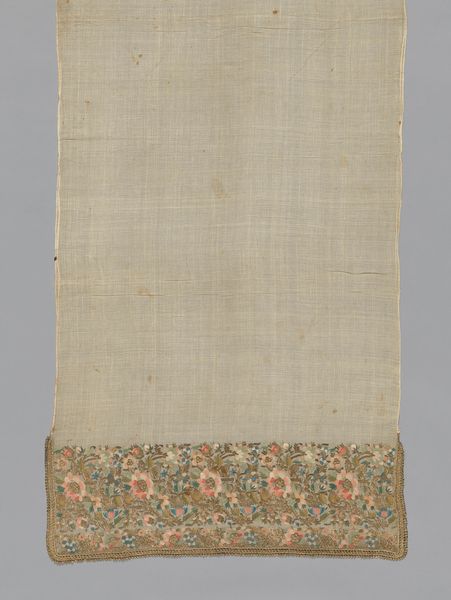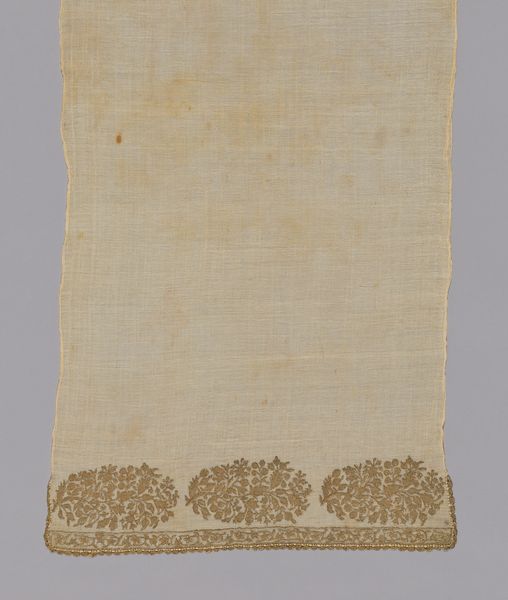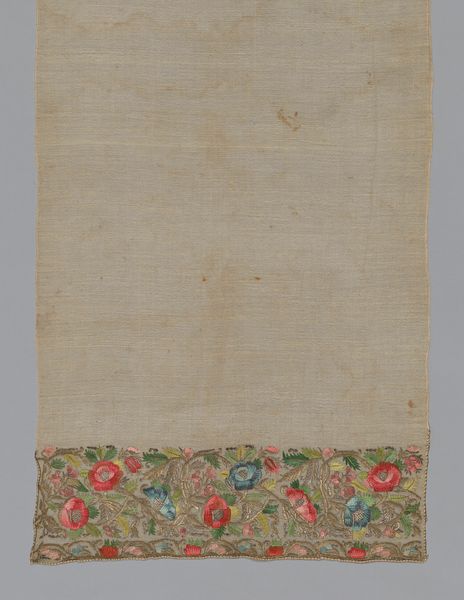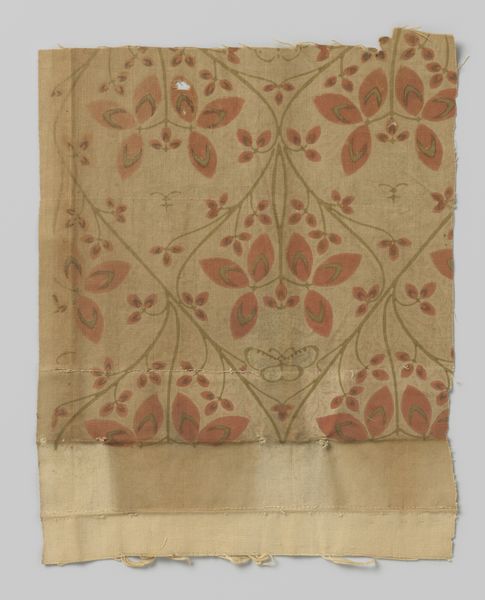
weaving, textile
#
weaving
#
textile
#
folk-art
#
decorative-art
Dimensions: 133.7 × 53 cm (52 5/8 × 20 7/8 in.)
Copyright: Public Domain
Editor: We are looking at an 18th-century "Towel or Napkin" of anonymous creation at the Art Institute of Chicago. It is primarily textile and weaving. The embroidery, with its delicate floral pattern along one edge, is what catches my eye. What's your take on this seemingly simple object? Curator: It's compelling to consider the labor involved in creating this object. Think of the sourcing of the flax or cotton, the spinning of the thread, the weaving of the fabric, and finally the intricate embroidery. All of this done likely by hand, yes? Who made this and what were their conditions of work? Were they enslaved? Editor: That hadn't crossed my mind at all, actually. I was mainly appreciating the aesthetics of the design. But the means of production are quite important aren't they? Is there any distinction between "high art" and these kind of utilitarian objects? Curator: Precisely. By examining this "Towel or Napkin," we can begin to challenge those distinctions. Its very existence testifies to the skill, labour, and possibly the social status of the maker, while raising key questions. How does mass production affect our understanding of value and authorship today? Editor: So, even in something as straightforward as a napkin, there is social commentary if you look closely enough. I'm still struggling with my attraction to design while attempting to evaluate its provenance and political context. Is it wrong to just like how it looks? Curator: It’s not about right or wrong. Rather, it's about layering your appreciation. Consider how your aesthetic pleasure intersects with, or perhaps even obscures, the complex realities of production, consumption, and class that shaped this humble yet powerful object. Now, I'm curious - where would this have been made? Editor: Hmm, this makes me want to examine other functional art pieces in the collection and think more critically about what goes into producing art.
Comments
No comments
Be the first to comment and join the conversation on the ultimate creative platform.
